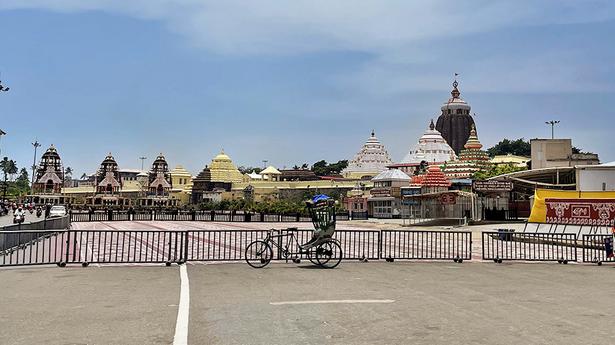
40 ‘chullahs’ in holy kitchen of Puri Jagannath Temple damaged
The Hindu
In all, 56 types of food items are prepared in the kitchen on a daily basis as offering to the deities
Miscreants damaged nearly 40 ‘chullahs’ (earthen hearths) in the ‘Rosha Sala’ — the holy kitchen of 12th century Shree Jagannath Temple, Puri.
The kitchen — an important structure of the temple which is regarded as the biggest of any shrine in the country — is prohibited for outsiders. However, someone had caused partial damage to these earthen hearths on Saturday night.
“A joint inquiry has been ordered to look into the incident. We are examining footages of closed-circuit television cameras to ascertain involvement or one or more than one persons. Strict actions will be taken against the culprits,” Puri Collector Samarth Verma said over phone on Sunday.
He said, “the daily rituals have, however, not been affected due to partial damage to the ‘chullahs’.”
Jagannath Temple’s massive kitchen room has 240 chullahs. More than 500 ‘sevayats’ belonging to ‘suara’ (cook) and ‘mahasuara’ are involved in the preparation of 56 types of food, including different varieties of rice, cake and sweets on daily basis. These are offered to deities — Jagannath, Balabhadra and Subhadra.
Sprawled over 15,000 sq ft area, the kitchen as several large halls and the height is about 20 ft.
“Enough food is prepared in the kitchen to feed thousands of devotees every day and on occasion of festivals, numbers of devotees see a massive jump,” said Narasingha Pratihari, a ‘sevayat’.

When fed into Latin, pusilla comes out denoting “very small”. The Baillon’s crake can be missed in the field, when it is at a distance, as the magnification of the human eye is woefully short of what it takes to pick up this tiny creature. The other factor is the Baillon’s crake’s predisposition to present less of itself: it moves about furtively and slides into the reeds at the slightest suspicion of being noticed. But if you are keen on observing the Baillon’s crake or the ruddy breasted crake in the field, in Chennai, this would be the best time to put in efforts towards that end. These birds live amidst reeds, the bulrushes, which are likely to lose their density now as they would shrivel and go brown, leaving wide gaps, thereby reducing the cover for these tiddly birds to stay inscrutable.












